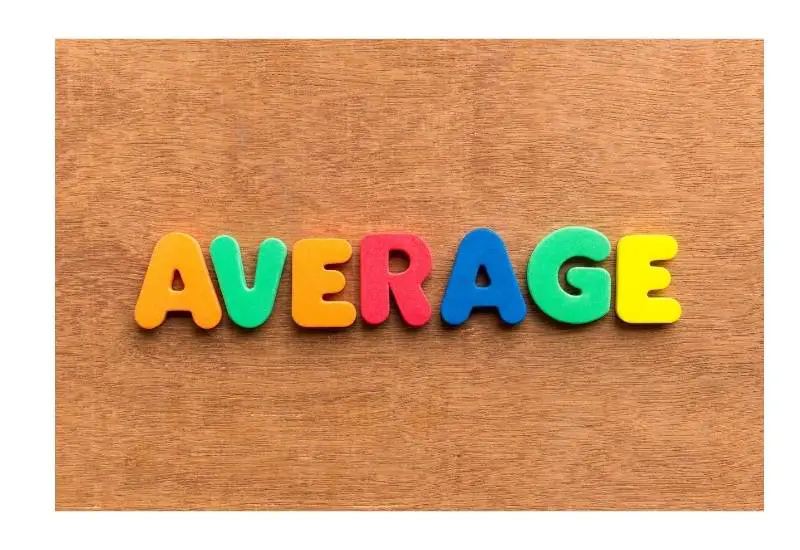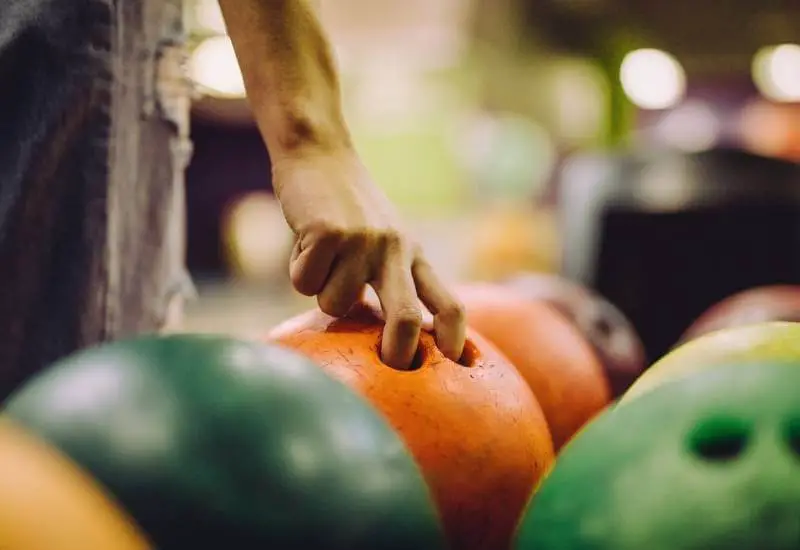Frequently, people ask me about the weight of the bowling ball, especially if they plan to buy a new one. Generally, bowling balls go from 6 to 16 pounds or more, which is a wide range. While there’s no right or wrong answer or simple formula, a bowler should think about finding a bowling ball that’s about 10 percent of your body weight. Therefore, if you weigh 175 lbs., the weight of the ball is 17.5 pounds.
Ultimately, the bowling ball weight should be light enough that you can comfortably hold it in your hand. With that, you should easily be able to throw it.
When choosing the right bowling ball weight, bowlers often go for one that’s too light. While a 6-pound ball might be thrown effortlessly, it could go haywire down the lane because you’re not able to control it.
If you’re still not sure of how to pick the best ball, here are a few more tips:
Finding the Right Bowling Ball Weight for Your Needs
A popular rule of thumb to determine the right ball weight is to get one that’s about 10 percent of your body weight. However, this isn’t a foolproof plan and doesn’t take into account the many factors that might prohibit someone who weighs a specific amount from throwing the ball comfortably and properly.
When determining the right ball weight, the real truth is that you must focus on your physical prowess and well-being. Be honest with yourself. You might be able to throw that 16-pound bowling ball without an issue. However, you must think about if you can throw it multiple times for many games without getting an injury or tiring your body so much that your shot efficiency is reduced.
If you’re struggling to finish the game with a 16-pound ball, don’t feel bad about downsizing. You don’t have to throw the heaviest ball to win games. As long as you bowl consistently with that ball, then that is the right bowling ball weight for you.
How Do I Know If My Bowling Ball Is too Heavy?

Typically, you know if the ball is too heavy because you frequently get tired when you bowl. If you can’t make it through one game, then that ball is definitely not right for you.
You may also notice that you have little control when you throw the ball. It might not go where you want it or may end up in the gutter a lot.
With that, you may notice that your arms shake while you hold the ball. This is a sure sign that it’s too heavy, and you need to go a few pounds less.
What’s the Average Bowling Ball Weight?

It’s often hard to pinpoint what an average bowling ball might weigh. I’ve come to realize that bowlers are of all ages, sizes, and shapes. However, statistics have shown that average male adults are comfortable throwing a bowling ball of 14 to 16 pounds (6 to 7.25 kg). The usual range for the average male is a 13-16 pound ball (5.8 to 7.25 kg). However, there are variations based on physical condition, pre-existing injuries, and upper body strength.
The average female can handle a bowling ball that’s 12 pounds, and this is the most popular weight. However, it’s best for avid bowlers who hit the lane once or more a week. The range for a female is about 10 to 16 pounds.
For kids, the ball weight should be close to their age. Therefore, an 8-year old should be able to throw a 3.6-kg bowling ball. A child of 6 years of age should throw a 2.7-kg bowling ball. However, the same caveats can apply. Therefore, it’s better to go by what feels comfortable to the child instead of their age.
Does Bowling Ball Weight Matter?
Yes, the bowling ball weight matters for several reasons. Physics is one of them. A heavier ball may create more force than you use because of its mass. In a sense, you should match your abilities to comfortably repeat the maximum throw force with the top weight of the ball.
When you do that, you get a blend of average throw speed and revolutions to create more accuracy and efficiency with your shot.
Along with speed, the weight of your ball also matters for the reverse. Why does it matter for adults and kids? If you’re trying to do a lot by throwing a ball that’s too heavy, the shot isn’t optimized, and you’re not using the correct form. This could cause an injury and reduce your score.
Plus, if the ball is too light, it negatively affects your shot. You don’t have enough force and resistance to knock down the pins.
What Are the Lightest and Heaviest Bowling Ball Weights?
Typically, 6 pounds is the lightest bowling ball weight out there for children. However, you can find specialty shops that make lighter balls.
Usually, these balls are meant for small kids and those with physical disabilities, where throwing a ball is problematic.
With that, the heaviest bowling balls allowed at the bowling alley (for most leagues) is a 16-pound ball (7.25 kg). Therefore, bowlers have many options and can choose the right bowling ball to meet their needs.
The only rule for leagues is that you can’t go over 7.25 kg. A heavier ball may feel better, but it can give you an advantage over the other adults who want to bowl.
Regardless, this is a large range and can make it harder to decide which one to choose. That’s why I’ve created this guide. You can easily figure out what ball is best for you.
Is It Better to Use a Lighter or Heavier Bowling Ball?
Choosing the heaviest ball means that you have more driving and hitting power and more action for the pins. However, these balls may make your arm tired or make you lose your grip with time.
Determining what the bowling alley offers where you bowl can help.
When you have a lighter ball, you must worry about deflection. This means the weight, speed, and ability to get the ball rolling before hitting the pins to maximize your carrying percentage. I know this seems a bit confusing.
In a sense, a lighter ball is faster, but it might not have enough spin to get down the lane and knock over all the pins.
Can You Add More Weight to a Light Bowling Ball?
It’s possible to add some static weights to alter the weight of the ball, but usually, those weight bearings are prohibited or frowned upon in professional leagues.
Many pro shops refuse to add weight to the ball for you because the alterations you want to make aren’t in line with USBC regulations.
If you’re just bowling a game for fun, then adding weights isn’t a problem. However, I know I like to pretend I’m in a pro game, so I want my ball to be legit.
One legal way to alter the weight of your ball is to drill balance holes into the ball. This changes the overall force metrics to maximize your shot pattern without adding weights.
There are hard and fast rules for the balance hole in professional and league play. Ultimately, you have a limitation of 1 ounce of side weight allowed for pro bowling balls. Choosing to add more weight is up to you, but I recommend that you just buy a new ball.
What Weight Bowling Ball Do Pros Use?
For many years, professional bowlers felt that bigger was better. I know when I bowl, I tend to like the 16-pound ball because it makes me feel more powerful. Even a few decades ago, most professional bowlers threw the 16-pound ball, which was the maximum weight allowed in bowling.
However, that has changed a lot. Now, roughly 70 percent of male bowlers use a 15-pound ball. A handful of bowlers use a ball of 14 pounds, but that’s not the norm for guys.
Pro women bowlers typically throw bowling balls of 14 pounds, but several 15-pound ball bowlers are out there. The maximum weight is 16 lbs.
If you are searching the balls available, it’s better to focus on your specific needs instead of what the pros use. Plus, their bowling balls are often more expensive and have many other features.
If the equipment of pros players interest you, you can check out my guide: What bowling shoes do pros wear
Finding the Right Bowling Ball Weight – Conclusion
At the end of the day, you must think about how you bowl. What ball seems to feel comfortable in your hand and offers you the correct methodology? It’s best to use your judgment and always listen to your body when you’re playing a game. If the ball you use requires more effort on your part and your plays seem to get worse as you go, consider downsizing.
Ball weight is a crucial part of your arsenal. However, the goal is to find the best weight instead of the highest one. Choosing a ball that works for you ensures that you can play many frames without fatigue and improve your overall statistics.


